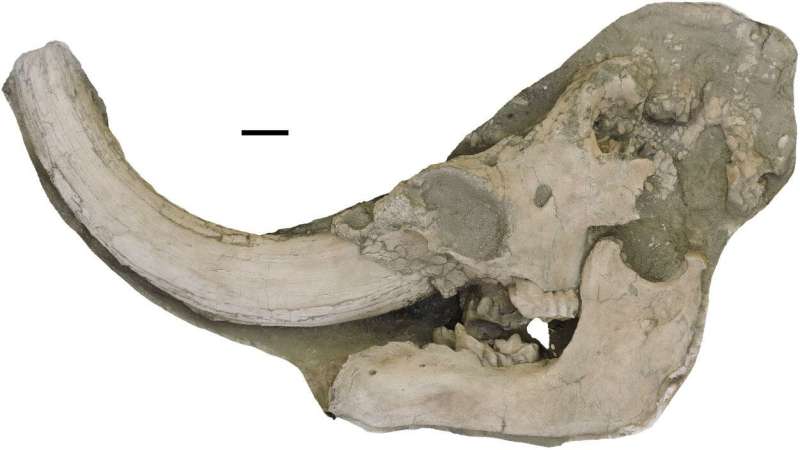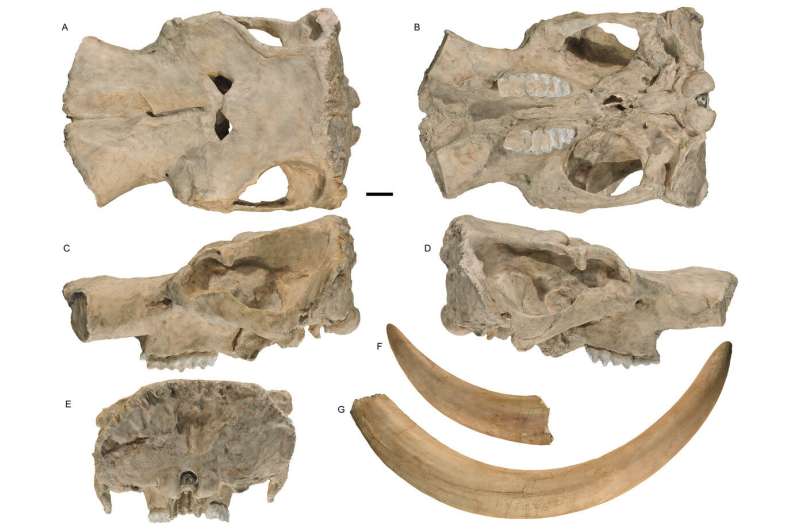March 29, 2019 report
New species of mastodon discovered in California

A team of researchers affiliated with several institutions in the U.S. has discovered a new species of mastodon. In their paper uploaded to the peer-reviewed journal PeerJ, the group describes discovering the new species and why it has only just been found.
Mastodon were large animals that resembled modern elephants. They existed during parts of the Miocene and Pleistocene epochs, and were related to mammoths. They have been extinct for approximately 3000 years. Scientists have known of their existence for approximately 200 years—and they have been studied extensively, which makes the discovery of a new species very much a surprise.
The new discovery did not come about due to a new dig—indeed, the bones that gave evidence of the new species have been held in several museums throughout California for over 20 years. The discovery was accidental—some of the team members were doing a study of mastodon teeth and found differences between the samples in California and those that were from other parts of North America. Those in California had molars that were smaller and less wide compared to those from mastodons in other places. This finding prompted the team to take a closer look, which revealed that the specimens also had more vertebrae, lacked a lower tusk and had femurs that were somewhat different.
The California fossils were found at Diamond Valley Lake in the 1990s, where 100,000 skeletal fossils were unearthed—the area is now covered over by an emergency water reservoir, so it is unlikely that more will be found. The researchers note that in addition to the obvious physical differences, there is evidence that the animals living in California were isolated from other species for thousands of years, and that they lived during the Pleistocene. They suspect there are also genetic differences. The researchers claim that the cumulative evidence strongly points to the discovery of a new species, making it the first new North American mastodon species reported in 50 years. Other researchers will have to review the work and conduct studies of their own before the new find can be officially recognized as a new species: Mammoth pacificus.

More information: Alton C. Dooley et al. Mammut pacificus sp. nov., a newly recognized species of mastodon from the Pleistocene of western North America, PeerJ (2019). DOI: 10.7717/peerj.6614
Journal information: PeerJ
Provided by Science X Network
© 2019 Science X Network



















